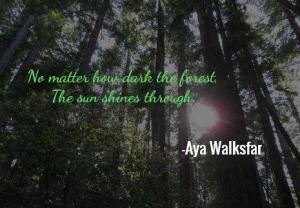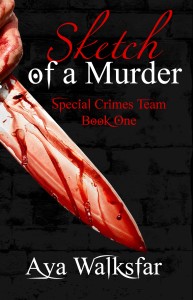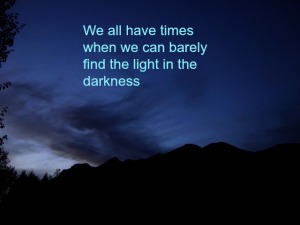STREET HARVEST, BOOK 2, SPECIAL CRIMES TEAM WILL BE FREE ON AMAZON UNTIL DECEMBER 7TH! GRAB YOUR COPY NOW!
http://www.amazon.com/dp/B00KVREDIC
Human traffickers abduct children to feed a 35 BILLION DOLLAR PER YEAR industry. Children are raped, sodomized, tortured, murdered.
IN the United States, a child goes missing every 40 SECONDS. STREET HARVEST is their story.
What do the bodies of two young children have in common with the murders of two adult men?
Eleanor Hasting, a black bookstore owner and child advocate, knows these killings are linked. She must convince Lieutenant Michael Williams, head of the Special Crimes Team.
Psychic Jaimie Wolfwalker, is prepared to do whatever it takes to locate and rescue the missing street children. The law be damned. Jaimie’s attitude and methods place her on a collision course with Sergeant Nita Slowater, second-in-command of the Special Crimes Team.
Four dedicated people struggle to come to terms with each other in their desperate search for clues. Every day brings more missing children, more young bodies. Can they stop the monsters before another child disappears?
Tag Archives: cops
The Story Behind Sketch of a Murder

In 2013, I wrote Sketch of a Murder, Book 1, Special Crimes Team. I write novels that have been ripped from the lives of women.
Sketch of a Murder exposes the horrendous truths around the #sexual #assault of women and children in the United States. Perpetrators often walk away from prosecution and justice.Even those who are convicted may only serve three years for forcible rape.
Many victims do not report sexual assault.
–They fear the perpetrator will return and harm them. Something that perpetrators often threaten to do.
–The victim does not want to make a private matter public. This is especially true if the perpetrator is a boyfriend, a husband or ex-husband, even someone they simply met and had a drink with.
–The victim is worried that she will be blamed for what happened or that she will not be believed. This is frequently the case when victims actually follow through with prosecution. They are questioned about their sexual histories, why they were in that particular place at that specific time, and so forth. Some cops grill women and girls who report rape in much the same aggressive and offensive manner. Women are often told it is their own fault that they were assaulted.
–The girl or woman feels ashamed and/or feels guilty and/or is embarrassed. A strong element of personal shame, guilt and embarrassment for the victim is a factor in every sexual assault crime.
There have even been public debates about whether the crime of #rape actually exists or if it is an “attempt by women and girls to gain special privileges.”
As a past victim of the violence of attempted rape–12 attempts during my life–I understand the well-founded hesitation of women and girls to subject themselves to the process of attempting to prosecute the perpetrator.
One of the attempts on me included the perpetrator’s use of a straight razor. When I reported that crime, the police took me to the station and after leaving me to “stew” in a room alone they finally came in and aggressively questioned what I had been doing walking around alone after dark.
I finally lashed out and told one detective that “I have the right to walk where and when I please; the attempted rapist is the one who should not be allowed freedom to walk around the city.”
In response to my declaration, one detective openly questioned whether or not a crime had actually occurred.
I held up my hand and sarcastically said, “I’m not into self-mutilation. I did not slash my own hand open.”
Is it any wonder that rape is the most UNDER reported crime in the United States?
In Sketch of a Murder, I bring these stats to life. The Avenger, a serial killer who stalks and tortures men who have skated justice, sets up a Court of God’s Justice and questions the men about their crimes and then hands down “justice”.
The “reasoning” put forth by the perpetrators is, unfortunately, all too indicative of the thought processes of males involved in rape. In my other life, I have listened to such men give those arguments about how it’s not their fault and besides, the girl/woman “asked for it.” (Yes, those were the words used by one man).
And what of law enforcement–the real good people; the ones who want the rapists to pay for their crimes? In Sketch of a Murder I explore the dilemma faced by law enforcement officers who must stop a killer whose mission they may secretly applaud.
Just to give you some idea about the enormity of the crime of rape below are some statistics. Please,keep in mind that rape is a seriously UNDER REPORTED crime:
—67% of sexual assault victims are under 18. More than half of this number are under 12 years old.
—95% of rapists are male
In the state of Washington, First Degree Rape is considered a Class A Felony–the worst felony possible under law, yet a rapist may only get three years in prison for forcibly raping a woman or a child. A person is guilty of First Degree rape when such a person engages in sexual intercourse with another person by forcible compulsion where the perpetrator or an accessory:
—uses or threatens to use a deadly weapon or what appears to be a deadly weapon or
—kidnaps the victim or
—inflicts serious physical injury including but not limited to physical injury which renders the victim unconscious or
—feloniously enters into a building or vehicle where the victim is situated.
In Washington State, a rapist who is convicted of Class A Felony rape may sue for and receive access to the any child produced by his violent act; thereby allowing him future access to his victim’s life, and a future way to manipulate, control, and emotionally and physically harm his victim.
In Washington State in 2013 there were 13,442 primary victims of sexual assault and 6,252 secondary assault victims.
33% of women in Washington State have been sexually assaulted. And, 20% of this number have been the victims of multiple assaults by different offenders.
Only 25% of the women who suffered physical injuries sought medical assistance and only 33% sought counseling. (I was never one of those who sought medical assistance or counseling. I simply could not afford it. Fortunately, I was raised in a matriarch where rape was considered a crime of violence–rightfully so–and the rapist was the only one blamed.)
Somewhere in America, a woman is raped every 2 MINUTES
43% of lesbian and bisexual women, and 30% of gay and bisexual men reported having experienced sexual assault.
34% of Native American and Alaskan Native women experienced an attempted or completed rape
19% of African American women have experienced an attempted or completed rape
18% of Caucasian women have experienced an attempted or completed rape
7% of Asian American women have experienced an attempted or completed rape
83% of adult females and 32% of the adult males who are developmentally disabled have been victims of sexual assault
Disabled women are raped and abused at a rate of at least twice that of the general population of women.

IF you or someone you know has suffered from sexual assault, YOU ARE NOT ALONE! PLEASE go to: http://www.wcsap.org/find-help This website is the Washington Coalition of Sexual Assault Programs. You will find a list of places to go to for help! PLEASE, make use of these services.

#READERS HOLD THE KEY

In this brave new world of literature, all the old rules have been tossed aside. #Ebooks have been blamed for this phenomenon, but the ebook revolution is only guilty in that it allowed more books to reach the public. According to Bowker, a respected name in publishing industry, over 3500 books are published each DAY! Currently,there are literally millions of books available.Competition for reader attention is fierce.
So, authors are reinventing the novel. A novel used to be defined as a complete story –with a distinct beginning, middle and end–consisting of seventy thousand words, more or less. In today’s world, novels may have as few as fifty thousand words or they may have over a hundred thousand words; the reader might reach the end of the book only to discover that the last page is a cliff-hanger and the second book–which may not yet be available yet–must be purchased to continue the story without any guarantees that book two will provide a satisfying climax and ending. This type of book is usually not labeled as a ‘cliff-hanger’.
Personally, this is when I am sorely tempted to fling the book at the wall then stomp it for good measure! (Unfortunately, I read a lot of e-books and reading devices do not like being bounced off of walls!)
Serial novels are another device designed to hook a reader. These books have an ending, but the main storyline has not ended–much like a television serial. These books are sometimes labeled as a ‘series’, or less often they are labeled as a ‘serial’.
Book series–not to be confused with books that actually belong to a serial story–are frequently written. With some series–like Kay Hooper’s earlier books in the Bishop series–the individual books can be read as stand-alone novels and/or read out of sequence without compromising enjoyment of the individual or of the series.
As a reader, I enjoy the flexibility this offers. This is reflected in the fact that as a writer my Special Crimes Team series (found at http://www.amazon.com/author/ayawalksfar) follows this model–the books can be read out of sequence.
Length and endings are not the only things rapidly changing. Gone are the days when romance novels stop the action at the bedroom doorway and mystery novels hint at the blood and gore, yet leave the details to the reader’s imagination. Scenes containing sex and violence have become increasingly graphic and prolific.
At a romance writer’s conference that I attended this summer, one publisher stated that readers not only wanted more graphic sex scenes, but that they were bored with plain vanilla sex. At one time, writers would have regarded such a statement as bordering on the demand for pornography. Today it is more along the lines of ‘business as usual’.
I read one of a well-known writer’s recent works in which I finally defaulted to skimming pages of the novel because various graphic sex scenes were endlessly repeated with a variety of partners. I never did find an actual storyline, unless the sex was it.
Then there are the novels that grossed a huge profit in very recent times, but have been called by some people in the BDSM community a bad example of true BDSM, but a good example of the glorification of domestic violence. (Actually, the Fifty Shades of Gray series follows the warning signs for the entire cycle of domestic violence. In my other life as a counselor, I referred young women like that to psychologists or therapists who specialized in treating victims of domestic violence.)
As a reader, I find graphic sex and violence that is not intimately tied to furthering the storyline boring, at best. On the other hand, as an author I write novels in which graphic sex and violence occur; however, I work diligently to be sure that those scenes are necessary for the development and movement of the storyline. As a reader, I enjoy novels that adhere to this general rule.
Another striking difference in novels of bygone years and novels of today is the level of profanity. In the past a writer who used “crap!” was considered racy. Nowadays, books contain a large variety of words considered to be profanity.
Again, as a reader, I look for novels where the word types used are congruent with the characters speaking. A rough and tumble detective in a hardcore mystery or crime novel might very well curse while an amateur detective in a cozy mystery might be skating the line by murmuring, “Oh, poo!”
Even in the face of changes that they do not like, readers frequently feel that they have little to no influence on what is written and published. In reality, readers are the key element in a novel’s success.
The reader’s input is mainly measured in four ways: 1. Sales numbers 2. Reader reviews 3. Personal feedback from beta readers and from the general public 4. Word of mouth recommendations.
Of those four methods that measure the reading public’s reactions to a novel, reader reviews and word of mouth recommendations are the most important ones. People browsing to find another book to read will often look for “social proof” that the book is worth their time. Reader reviews and word of mouth recommendations are that “social proof”. Unlike word of mouth recommendations, reader reviews can be directly linked to sales increases. An increase in positive reader reviews will increase the sales of a book.
Because readers,like everyone else in our busy society, have a large number of demands on their time, reviews are sometimes difficult to obtain. As a reader, I will often end my day by sitting down to read for a while before I go to bed. As a voracious reader, it is not unusual for me to read anywhere from five to ten books per week.
Each review requires approximately five minutes to write and post on Amazon or Goodreads–the sites most widely used to find new books. Five minutes doesn’t sound like a lot of time to invest in such a worthy cause, but when time to relax is at a premium it can feel like ‘one more chore’.
In order to combat this feeling, while supporting authors whose work I enjoy, I keep a pad of paper and a pen handy. While I read I jot down notes on the points I liked best about the book. Authors love long, detailed reviews, but a two-sentence review that summarizes what a reader enjoyed most–one reader’s review focused on her enjoyment of the character Grandma Greene in the novel Old Woman Gone(http://www.amazon.com/Woman-Gone-Special-Crimes-Team-ebook/dp/B00OICBEV0). In Backlash (http://www.amazon.com/Backlash-Special-Crimes-Team-Book-ebook/dp/B00W7UJAWA), a woman identified with the struggles faced by several supporting characters–is deeply appreciated (especially if the star rating is four or five! As an author, those reviews make the long hours of writing, editing and rewriting worth every minute spent).
There you have it–with a few minutes of your time you, the reader, decide whether a novel succeeds or fails. In so doing, you ultimately choose everything from the length of future novels to the amount of profanity used to how graphic the scenes containing sex and violence will be written. You are the future of literature.
PLEASE LEAVE A COMMENT
Do you enjoy:
1. Short novels of less than 200 pages?
2. Do you feel short-changed by a novel that does not contain over two hundred pages?
3. Do you like cliff-hanger endings?
4. Do you buy serial novels, with serials defined much the way television serials–such as Special Victims Unit–are defined?
5. Would you rather have a series of novels connected by the characters, but still able to be read out of sequence as a stand-alone novel?
6. Are you comfortable with graphic sex scenes used in romantic situations during which sex would be a natural progression?
8. Do you feel violence should be depicted graphically in the more hardcore crime and mystery novels, if it is a natural occurrence within the storyline?
9. Are you comfortable with the use of profanity by characters depicted as people who would likely use such language?
10. What would you like to see different in the development of novels?
A Short Reminder
#SEX AND VIOLENCE
We live in an undeniably violent world–wars, murders, rapes, ad nauseum. Should books graphically reflect that reality? How much is too much?
As the author of murder and mayhem–and even in my literary works to some, though to a lesser, degree–this is a question I face. This issue is compounded by the question of sex. As with violence, sex permeates our culture. Nearly every television show, movie, and advertisement has sex intimately entwined. Let’s face it: sex and violence sells.
Yet, I want my work to mean more than a dollar sign or a cheap thrill. I feel a responsibility to tell stories worthy of a #reader’s time. After all, my commitment is to entertain, enlighten and empower. Where does that leave such a writer?
We become a weaver of plots, a builder of characters, a creator of worlds.
I use a certain amount of graphic sex and graphic violence in some of my work. Note the word “some” and the phrase “a certain amount”. Since I write everything from young adult to vampire to #murder to literary (yes, I realize authors are supposed to brand themselves with one genre, but that robe felt too tight and it itched!) the use of sex and violence must be tailored to the story.
For example, in the young adult novel, Black Wind, (TO BE RELEASED JULY 31) they never get their clothes off, yet in the vampire novel, Artemis’ Warriors(COMING AUGUST 31)….well, let’s just say that sometimes clothes get scattered all over the place. The mystery/cop/thriller novels, such as The Special #Crimes Team series, fall somewhere between these two poles.
Likewise, in Black Wind, violence occurs but to a lesser degree and not as graphic. The vampire fighters in Artemis’ Warriors dash about, lopping off heads and arms and other important parts. The blood flies. In Sketch of a Murder, SCT, Book 1, the reader sees crime scenes through the serial killer’s eyes–and the scenes are gruesome, yet in Old Woman Gone, SCT, Book 3, bloodshed is minimal. (All the books in my series can be read as stand-alone novels.)
So, what creates the different levels of sex and violence? The story. It is my contention that the plot and the characters in a story determine the amount of sex and violence, as well as how graphically those instances are portrayed .
All too often, I have picked up a novel and within a few chapters have read ten pages of graphic sex (more frequently than graphic violence even) for every page of story. Needless to say, I toss the book aside and seldom pick up anything else by that author. If scenes of sex and violence dominates a work with no clear purpose in forwarding the story, then I have to ask how well-developed are the characters and how substantial is the plot?
Readers, what is your opinion? How much sex and violence is too much? Leave a comment!
DON’T FORGET: UNTIL AUGUST 30 FOUR of my e-novels are FREE! Want a #FREEBOOK? Go to: http://www.smashwords.com/profile/view/AyaWalksfar Choose one, or all, of the books listed below. Follow the checkout instructions. When asked for the coupon code, entered the code specific to that book. Continue checkout. Download the format that works best with your device. epub for NOOk; mobi for Kindle; or whatever format your device requires and is listed.
Street Harvest, Special Crimes Team, Book 2 (all of my series can be read out of order, or as a stand-alone novel) Use Coupon Code: JE68B
Run or Die Coupon Code: MX48Y
Good Intentions, a literary novel Coupon Code: HQ72R
Dead Men and Cats, a mystery novella Coupon Code: UH42Z
If you have problems with the download, please contact me at ayawalksfar@gmail.com I will try to answer your questions.
Share the codes with family, friends and co-workers. Heck, share them with your neighbors and maybe they will read instead of party all night and keep you awake!
Connect at http://www.facebook.com/ayawalksfar
Be a fan at http://www.facebook.com/AyaWalksfarAuthor
Send a tweet to http://www.twitter.com/ayawalksfar
Check out cool photos at http://www.pinterest.com/ayawalksfar
Have a GREAT WEEK!
Genre vs Author
Genre VS Author
When searching for a new #book to read, do you first look in the genre or do you search by author’s name? How important is it for an author to write in one genre versus writing in several genres–such as an author who writes mystery, literary, paranormal and young adult versus an author who writes only mysteries or only literary or only paranormal books?
As an author I am always seeking ways to improve my visibility to readers and make it easier for them to find my work. I have been given various pieces of advice about writing in only one genre versus writing in several. There is one school of thought that says an author can “get away with” writing literary novels in conjunction with writing another genre since literary is in a class by itself. I write both literary and #mystery on a regular basis.
However, being an avid #reader myself, who consumes books from all genres except religious and erotica, I have had characters wake me up in the middle of the night yelling, “Write about me!” So, off I tromp to the writer’s dungeon, sleep still clouding my mind, and I kick up the computer. Fingers on the keyboard, I begin typing while not fully awake.
The next day when I re-read the beginning of whatever scene or story I worked on in the middle of the night, I gasp! Oh. My. God! I’ve written the opening scene of a vampire story with werepanthers (or a young adult story with a feisty grandmother and a young girl who loves horses).
A dilemma is upon me. Do I erase these poor characters, do I assign them to the Purgatory of the dreaded “Uncompleted Stories”, or do I continue to develop them and the story they have to tell?
If I do proceed to tell their story, do I publish it under the same name as I publish my literary and mystery novels, or do I use a different name–like C. W. Anon (Crazy Writer Anonymous)?
What would you recommend? My characters beg of you, please leave a comment.
Black Wind, a young adult novella, will be released July 24, 2015.
What would force a seventeen-year old girl to steal a horse? Follow my FB fan page and find out! http://www.facebook.com/AyaWalksfarAuthor
Death by #Dog, Book 5, #SpecialCrimesTeam
Chapter 1
WEDNESDAY
Soda’s wavy, chestnut hair fell to the middle of her back. She pulled it back and tied it with a rubber band, so that it fell under the collar of her hoodie. Her mother had loved brushing and braiding Soda’s hair, even when Soda topped her mother’s five-foot-three height by two inches–before Mom got real sick; before sixteen-year-old Shelly Myers had become a street kid tagged as Soda. Sometimes, her mom would stand with her in front of her bedroom mirror and point out how they both had gray-blue eyes and the same determined, strong chin. She’d laugh and say, “Yeah, but you’re this curvy, sexy woman and I’m a stick that walks and talks.” She’d frown into the mirror. Mom would kiss her forehead and reply, “You are beautiful just the way you are.” Soda had loved those times.
But those times were miles away and months gone and mid-March in Seattle, Washington, breathed an early spring chill on the city. She flipped her hood up then zipped up the sweatshirt and stuffed her hands in the pockets. This part of Seattle–full of warehouses hulking silent in the evening and abandoned buildings with busted windows–held painful memories for her; so painful that it made her feel sick in the pit of her stomach, yet she felt unable to stay away.
Auntie El had been held by her kidnappers in a warehouse not far from where she walked. The elderly bookstore owner had befriended the street kids, Soda among them. Now she was gone, too; just like Soda’s mother. At least, Mom’s death had been beyond Soda’s control; not like Auntie El–dead because of Soda. “If only I had…” began the haunting litany. She shoved it away. Tears burned her eyes. It had been a year, yet the hurt twisted as sharp in her chest as if she’d lost Auntie El yesterday.
Ever since then these dark streets called to her. Every night she came down here, skittered from one dark spot to another, watching; circled the warehouses and listened. Some days she wondered if she was getting a bit crazy. What did she think being here could accomplish?
She edged along the deeper shadow of a crumbling, brick building; its windows blinded eyes looking out on littered streets. At the sound of male voices across the deserted street, she shrank back. Between black jeans and navy blue hoodie–pulled close around her pale face,white hands stuffed in her pockets–the shadows swallowed her form. Standing perfectly still, she strained to see what the men carried.
A few street lamps–not yet vandalized–spilled watery yellow light on the dirty sidewalk. The men sauntered into the light, the body of a large dog hanging between them as they made their way to the dumpster squatted in the mouth of the alley across from where Soda hid. They swung the body back and forth until enough momentum had built then let go. The animal sailed over the edge of the dumpster and thumped into the trash. They pulled off their gloves and stuffed them in jacket pockets.
The hum of traffic from several streets away sang a muted song, but the men’s voices–harsh and loud–rode over top of it. The short, heavy man lit a cigarette. The ember glowed as he inhaled. Grey smoke drifted up toward the circle of lamp light, but disintegrated when a slight breeze puffed off Puget Sound, smelling of dead fish. “Damn, that was some sick bitch. Shortest damn fight I’ve seen.”
The taller man accepted a cigarette from the other man and lit it. “Short for damn sure. Only thing that bitch,” he nodded toward the dumpster, “good for was a trainin’ fight. Can’t believe that other’n; not even two years old, yet. Man, I want me one of them dawgs.” He chuckled and a shiver ran up Soda’s spine.
The first man shook his head. “In your dreams.” He tossed his cigarette down, not bothering to stomp it out.
A cramp seized Soda’s calf muscle. Afraid any movement would draw their attention, she bit her lip hard to keep from shifting.
“What you think one of them dawg’s worth?” The taller man flicked his cigarette butt out in the middle of the street.
“I heard some of them cost as much as fifty big ones.”
“If I had me a dawg like that…”
The shorter man guffawed. “You wouldn’t know what to do with it. Them things are the devil’s own dogs. One of them would eat you up, bro.”
They moved away, snatches of words fading until only the hum of the traffic from nearby streets filled the air. A minute later, a truck roared in the night. Soda watched as a large pick up screeched away from the curb a half block away. She waited until she could no longer see the red of the taillights before she hustled across the empty street.
Breath sucked in deep, she exhaled then climbed the side of the dumpster. For a moment, she balanced on the inches-wide lip and stared down. Right when she had just about decided to hop off, a faint movement caught her eye.
Without hesitation, she dropped into the garbage and waded to the animal. One dark eye blinked slowly up at her. “You poor baby,” she sat on rustling papers amid half-rotted food and cradled the dog’s head on her lap. Gently, she stroked the dog’s side and face between the gaping wounds. The pink tongue slowly snaked out and licked Soda’s hand.
Even in the poor light from the street lamps, she could tell that the dog’s coat had once been a golden color. She imagined how it would have glowed in the sun. Now the spray of drying and dried blood matted it with dark splotches. One of the muscled forelegs had been gashed and the sharp point of white bone jutted out of the skin. She’d once been a beautiful #animal, the well-built body bigger than a German Shepherd’s.
Another shuddering breath pushed the dog’s ribs up and down. Soda remembered a lullabye that her mom sang to her whenever she woke up from a bad dream. As she petted the dog’s big head and stroked her side, Soda sang in a quavering, soft voice.
Before she’d finished her song, the #dog licked her hand once more, looked into Soda’s eyes and breathed her last.
Tears coasted down her cheeks as she gently laid the dog’s head on a pillow of garbage. With the sleeve of her hoodie, she scrubbed them away. She had always loved dogs. Had one before her mother died; before she’d had to leave to escape her stepfather’s drunken advances. Her jaw clenched as she struggled to her feet. Fists knotted at her sides, she vowed that even though she was only a street kid she’d do something! She didn’t know what, but she would do something to stop those assholes from slaughtering any more dogs.
Death by Dog will be Book 5 in the Special Crimes Team series. All of the books in the series can be read as stand alones without reading prior books in the series. Death by Dog is scheduled for release Winter 2015-2016.
Backlash, Book 4, Special Crimes Team: Success can be deadly…if you’re a woman! AVAILABLE on pre-order as an ebook on Amazon. Go to http://www.amazon.com/Backlash-Special-Crimes-Book-4-ebook/dp/B00W7UJAWA
Never miss a post! Type in your email in the box on the right and subscribe to this blog.
For a list of Aya’s books, go to http://www.amazon.com/author/ayawalksfar
The Birth of a Book
In the unheard screams that rip the fabric of the night, in the silent tears of a victim huddled in upon herself in the corner of her own kitchen, Sketch of a Murder was born.
Domestic violence and rape are patterns of behavior used to establish power and control over another person through fear and intimidation, often including the threat or use of violence.
Once the first seeds of an idea are planted, I begin to research. What I found in the case of Sketch of a Murder was:
One in four women experience domestic violence in their lifetimes.
4 MILION women experience physical assault and rape by their intimate partners http://www.safehorizon.org/page/domestic-violence-statistics–facts-52.html?gclid=CJ6k76f9rcUCFYeEfgodUwYACA
The number of women murdered by current or ex male partners between 2001 and 2012 were 11,766. During that same time period, the number of American troops killed in Afghanistan and Iraq were 6,488.
http://www.huffingtonpost.com/2014/10/23/domestic-violence-statistics_n_5959776.html
FBI Statistics for 2013 for Washington State:
Forcible rapes in seven cities: (these are the ones actually brought to trial. Until conviction, they are only considered alleged rapes) 657.
Rape and domestic violence are among the most under-reported crimes. Frequently, women internalize the blame for being beaten and sexually assaulted. Shame and a sense of hopelessness; a fear of the abuser increasing the abuse; a fear that there is no way to escape; fear of reprisal against them or their family, seals their lips against reporting the crimes.
When the crimes are reported, the woman often finds herself grilled as if she is the perpetrator–what did you do to anger him; why were you wearing that slutty dress; isn’t it true that you’ve slept with other men; how many other men; how long did you know X before you invited him to your home; and the interrogations go on and on.
If the crime does go to trial, the woman’s ordeal is increased. She is placed on the stand and forced to testify to humiliating and painful memories in a hostile environment. She is cross-examined as if she is the defendant. Evidence can be difficult to collect or has been contaminated; the woman waited too long to report the crime; the woman’s character is put on trial; the trial becomes a “he said–she said” fiasco. Technicalities and good attorneys allow men to smile as they walk away unscathed after perpetrating horrible crimes that will scar their victims forever.
With research as a foundation, I begin a process of creative “what-ifs”. What if a person decided to take justice into their own hands? What motivates a person to seek violent revenge? What type of personality would such revenge require? What type of training would a person need to be successful? What type of tools would that person have to use?
From this process, the Avenger sprang. In Sketch of a Murder, the Avenger has been triggered by a life event to exact justice. After the first murder, the Avenger goes on a spree of gruesome killings. The Avenger, however, doesn’t simply pick guilty men who have skated on serious charges; the Avenger wreaks havoc among wealthy men who have used position and power and monetary advantage to walk free.
Now that I have the antagonist–or the bad person and that person’s motivation–I must decide who will oppose this person and why; who will be the protagonist.
Some crimes are far reaching enough to warrant the formation of a Task Force. Again the creative “what-ifs” are employed. What if a task force is created by the governor because the Avenger has eluded multiple police forces and the deaths of wealthy men negatively impact her position? What if the task force is not constrained by jurisdictional boundaries within the state? What if the best cops for that force are misfits, cops that have ticked off a superior because they refused to toe the blue line? What special attitudes and abilities would they bring to the story? What conflicts with each other would such renegade team members face?
The Special Crimes Team was born from the governor’s desperation to find and stop the Avenger. Purely a political move, or was it?
All books need a place of occurrence. Whether that physical place plays a large or a small part in the story depends upon the story. The state of Washington is blessed, and cursed, with features that attract the best of people, and the worst of people. Mountains, wilderness, farmlands, big cities, airports, seaports, railway stations, high immigrant and migrant worker populations, a diverse and mobile population, a down turn in the economy that resulted in foreclosed and abandoned homes, proximity to another country’s border and a general attitude of live and let live makes this state a haven for human traffickers, dog fighters, kidnappers, and other criminals who need unlimited places in which to blend and/or to use to escape. 
With those elements–the crime, the antagonist, the protagonist, the scene and some of the complications–in place, the work of writing begins.
The first draft is written without concern for grammar, punctuation, or even logic and timelines. It is the story in the rough. After the first draft comes multiple drafts, each one refining the story, further developing the characters, fleshing out the scenes, fine tuning the dialogue, checking and fixing the timeline; and, reassessing the logic and the story arc. When I decide the story is finished, I begin editing. After I edit as much as I can, I send the work to others to edit. When that work is returned, I read the feedback and evaluate what changes must be made.
After editing, Beta Readers are engaged to comment on the story as readers–did it hook them; did the dialogue sound real; were the situations believable, and so forth. With that feedback, I make final corrections then send the book to the publisher.
The publisher obtains a cover, formats the book and puts the package together for presentation to the public. And, a book is born. 
Be sure to enter your email so you won’t miss any posts!
To see all of Aya’s novels: http://www.amazon.com/author/ayawalksfar
Hang out with Aya on Facebook: http://www.facebook.com/ayawalksfar
Or chat with her on Twitter: http://www.twitter.com/AyaWalksfar
KKK in BLUE
The KKK in Blue
 It is sad to say…that time is now.
It is sad to say…that time is now.
I am about empowerment of #women and girls. I don’t talk about politics, much, or religion. When I do, I try to be even-handed. Well, the time for that is past.
After a lifetime of fighting for justice on several fronts, I had to step back from fighting the power structure because the fires of that struggle nearly consumed me. I had to learn to let go or die. Literally.
But it is time to weigh in on the events unfolding in the United States. These events are not surprising to me. It has never been safe to be a minority, nor has it ever been safe to be female, in what is supposed to be the free-est country in the world.
The strides we have made have been as much illusion as reality. Yes, a woman can now head a huge corporation and make a million dollars, but she can’t walk down a dark street safely nor does she have the sole right to govern whether or not she chooses to remain pregnant. She is harassed on public transportation; she is molested on airplanes. Women who are raped and have a child as the consequence of that rape can be forced, in 31 states, to allow the rapist access to her child.
Yes, black people can go to any school, if they have the money, but they can’t go jogging with assurance of safety nor can they gather to protest an injustice without fear of excessive #police force.
Women are still portrayed by the media in sexual ways; actresses asked about what they wear and their extra pounds while actors are asked about the parts they played and the stunts performed. Blacks who gather to protest are labeled thugs and rioters. Whites who destroy cities over a sports game are labeled drunken revelers and given a wink–it’s all in fun and high spirits.
Women can go to college, but they can’t safely attend a college party. If they have sex with more than one man, they’re whores and skanks. Blacks can go to college, but they can’t bike across the park. In Eastern Washington, God help you if you are #Latino or Mexican or Mexican American. You might as well paint a target on your back. If you’re #Native American, the bad news is–genocide is alive and flourishing under the guise of police power.
Are we seeing a pattern here?
Words are powerful and it is high time that the media be called to account for their biased reporting–and total NON-REPORTING of white and of male crimes against #minorities–racial and sexual. If you are male and white, you are right. If you are black, get back. If you are female…you be humble and grateful and for God’s sakes, look good! If you are a sexual minority, God help you. You are beset on many sides. If you are a white young male and murder women because they don’t want to date you, you are troubled. If you are black and accused of stealing tobacco products, you are criminal.
We are struggling for basic civil rights that are, supposedly, guaranteed to all Americans. When are white males–REGARDLESS of age or career–going to be called to account by the media and by the justice system? When are we going to admit and stop the Ku Klux Klan in Blue? When are the streets going to be made safe for women and LGBTQ and racial minorities?
If a cop sees another cop do something illegal, the first cop’s duty is to PROTECT the CITIZEN regardless of that citizen’s color, race, religion, sexual orientation or gender. It is not to cover it up, but to stop it! When a man sees a woman being harassed, the man’s duty is to stop it! When a white sees a black attacked, the white’s duty is to stop it! When a woman sees someone being harmed, the woman’s duty is to stop it! We may not be physically able to stop it, but we can call for help. We may not be physically able to stop it, but as the media we can tell the truth–for a change!
Words are powerful and it is the media’s DUTY to be even-handed, to be seekers after truth; not part of the problem. The first part of any problem is to recognize and name it. As long as we don’t admit these issues exist, and have existed since this country was founded, we can’t address them. Isn’t it time to guarantee #civil rights to more than just white, male, wealthy individuals?
WHAT IS REAL?
Novels represent the intersection between reality and fiction. What really happened? Is this novel a thinly disguised autobiography of the author? A biography of another person? Did those events actually occur?
Authors of literary fiction are more likely to be asked this question than authors of sci-fi, murder mysteries and fantasy. Mohanalakshmi Rajakumar, the Qatar author of An Unlikely Goddess, was asked if the events of her novel actually happened to her. I, too, have been asked if my literary novels are autobiographical. Though we would like readers to focus on the issues in the story, such a question is truly a compliment. People have connected to the novel on a visceral level.
It was once said of the western writer Louis L’Amour that if he wrote of a stream in a certain place, the stream existed. The Law and Order series on television boasts of ripping their episodes from the headlines. In my mysteries, I use extensive research to present reality in a fictional milieu. In Street Harvest, I take the very real issues of human trafficking and the danger in which street children live constantly and blend it with fiction as a way of highlighting these current issues to allow people to connect on an emotional level.
Reading a powerful book can change our lives.
Since I write to not only entertain, but to also enlighten and empower; and to ultimately make a positive impact on our world, it is important for people to emotionally connect with my work. I love hearing such comments as “I want Grandma Greene for my grandmother.” The greatest compliment I have ever received was from a young person who said Good Intentions helped him to deal with being adopted and to forgive the fabrications of his adoptive parents.
A good writer knows that verisimilitude–details that lend the appearance of being true or real; what has happened to real people–increases the authenticity, the believability of her work. As such, it provides a more satisfying read and, in some cases, tidbits of knowledge.
While the cities and mountains and issues are often ripped intact from real life, the protagonists, antagonists and other characters within the novel–the good people and the bad people–seldom resemble any one person, living or dead. An author gleans characteristics, traits, eccentricities, and manner of facing life from a wide variety of people then builds the character from specific ones that will allow the story to unfold in a logical and entertaining way. The reader is guaranteed to “see” Uncle Jack or Aunt Milly in at least one of the characters, and therefore more likely to connect on a visceral level with the novel. In the end, it always returns to the reader–what will enhance the experience of the novel for the reader? What will give the reader the most value for her/his time and money?
The fiction I most enjoy reading incorporates reality with fiction to provide entertainment, enlightenment, and empowerment. It is also the type of fiction that I write.
I have tackled the tough, and sadly all too real, subjects such as family secrets, homophobia, racial tensions, hate crimes, betrayal, loss, grief, pedophilia, rape, domestic violence, street kids, human trafficking and much more in both my literary and my mystery novels. Yet, in each novel I have shown how people can triumph over horrendous circumstances and rise to live worthy and good lives. Much of my inspiration comes from real people I have known; people I have admired. Those people were ordinary people who quietly lived extraordinary lives.
So, what is real? The reality is that authors draw from real life, whether we write sci-fi or literary novels. We take what’s real and shape it into a novel. We write of love and hate; joy and sorrow; triumph and despair.
Do you identify with the characters in novels? Would love to hear! Please, comment.
Don’t miss the next post. Subscribe.
Mohana’s An Unlikely Goddess (ebook) is on sale for $0.99! Go to http://www.amazon.com/An-Unlikely-Goddess-Mohanalakshmi-Rajakumar-ebook/dp/B00FVSP82Q
To see a list of my novels go to http://www.amazon.com/author/ayawalksfar




